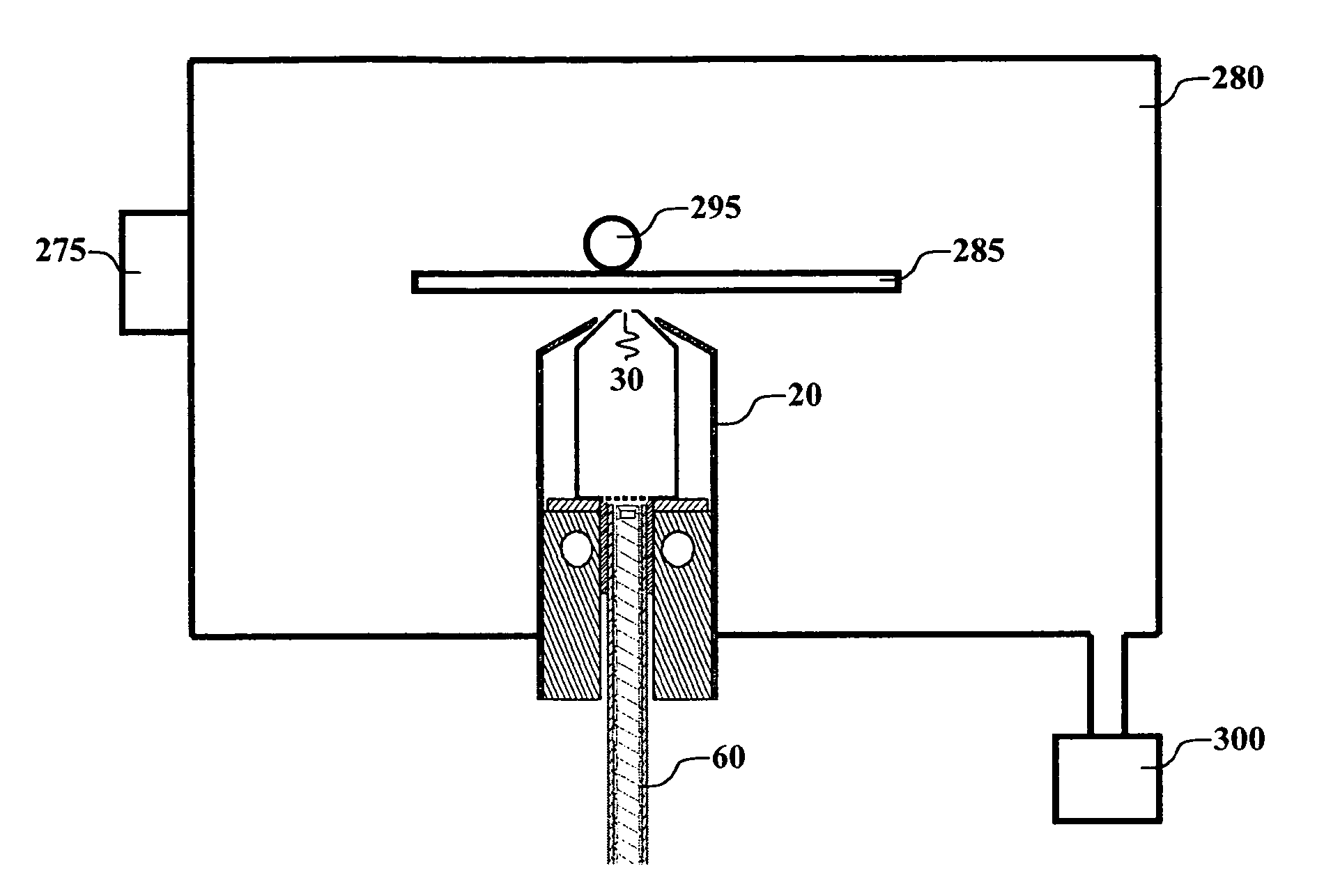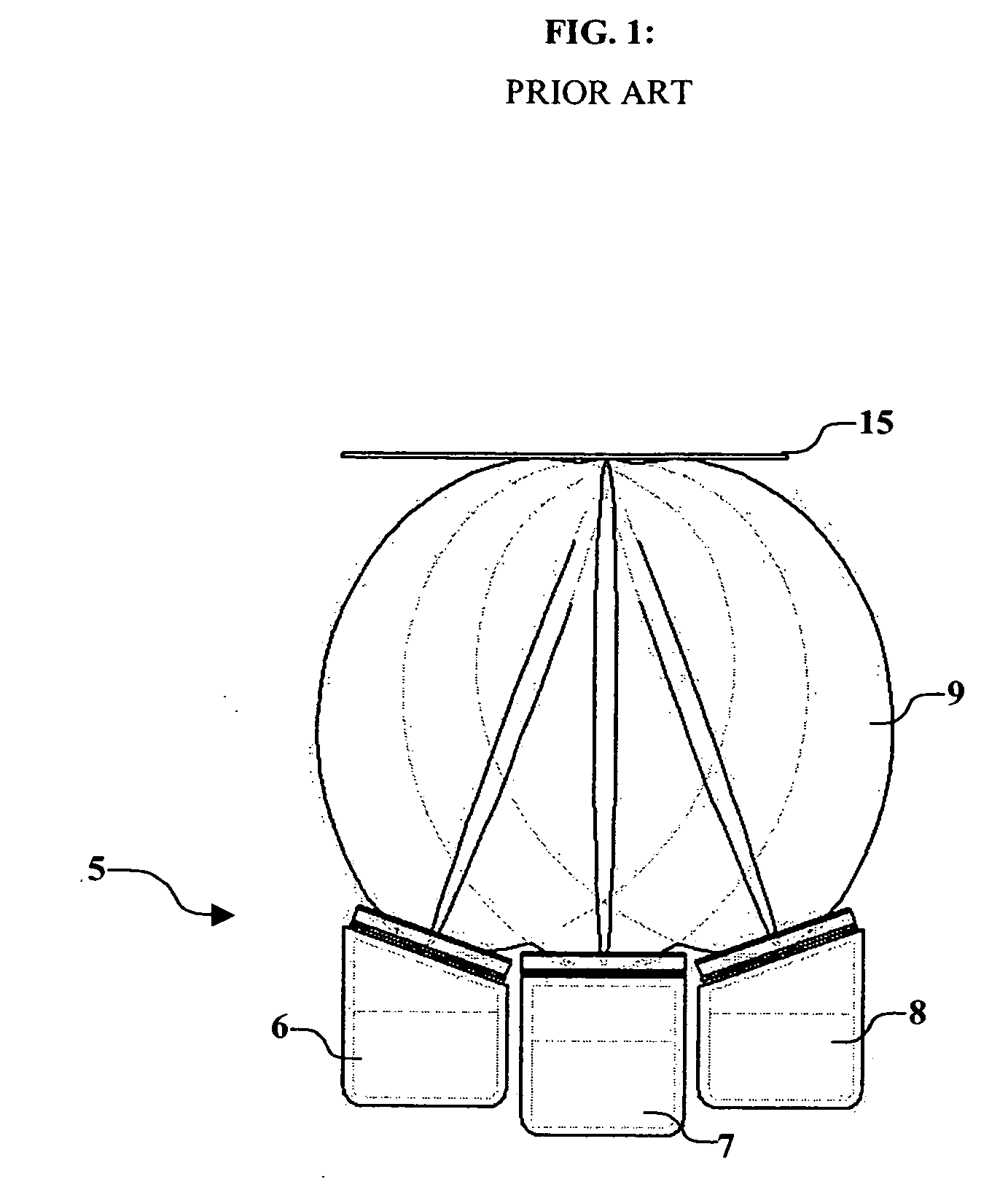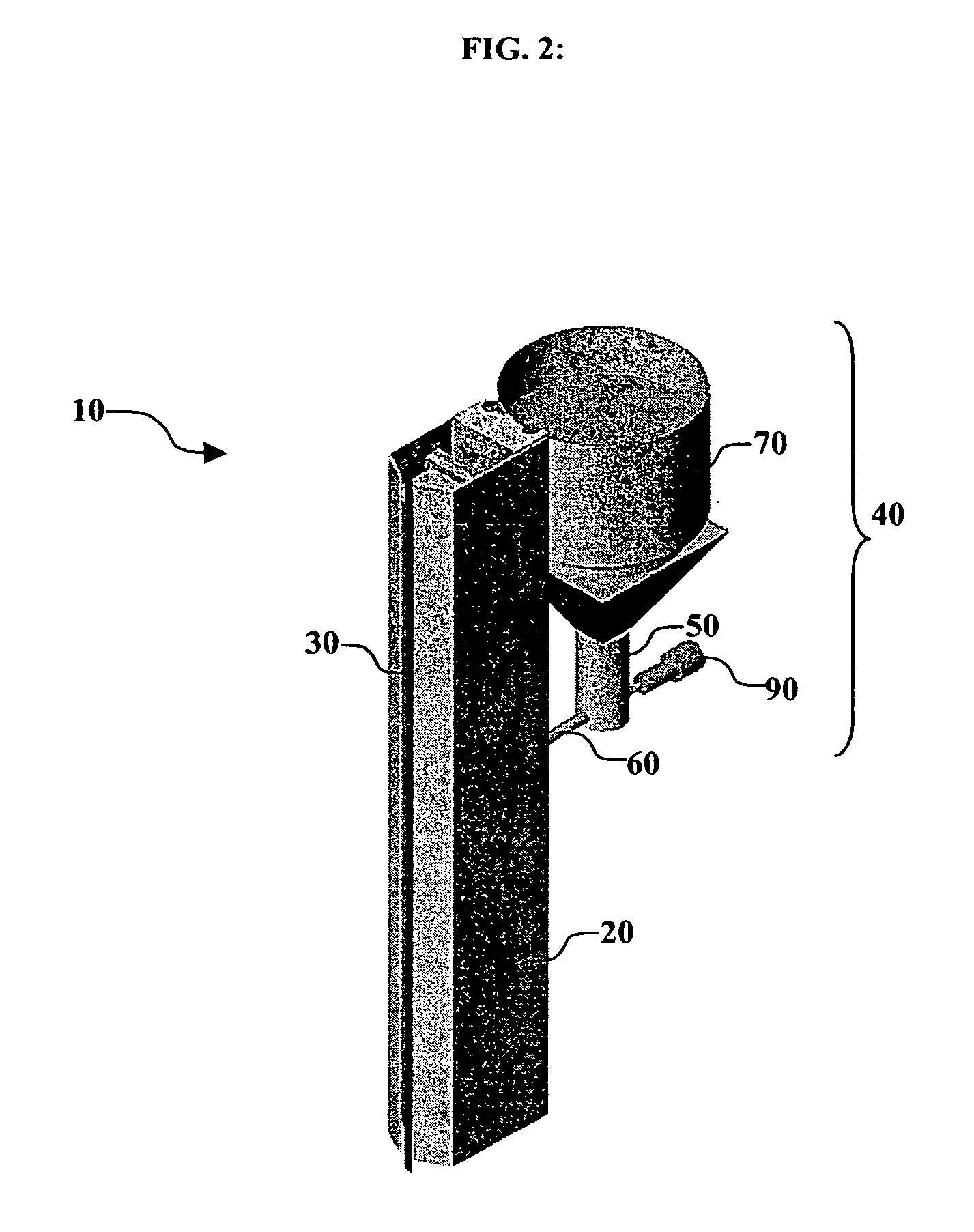Delivering particulate material to a vaporization zone
- Summary
- Abstract
- Description
- Claims
- Application Information
AI Technical Summary
Benefits of technology
Problems solved by technology
Method used
Image
Examples
Embodiment Construction
[0050] Turning now to FIG. 2, there is shown a three-dimensional view of one embodiment of an apparatus according to the present invention for vaporizing organic particulate materials and condensing them onto a surface to form a layer. Vaporization apparatus 10 includes manifold 20 and attached feeding apparatus 40. Feeding apparatus 40 includes at least first container 50 and feeding path 60, and can also include second container 70. First container 50 is provided with a quantity of organic material in a particulate form, such as a powder in one embodiment. Second container 70 can receive the organic particulate material and transfer it to first container 50 as will become evident. Manifold 20 includes one or more apertures 30 through which vaporized organic material can exit to be deposited on a substrate surface. Manifold 20 is shown in an orientation whereby it can form a layer on a vertically-oriented substrate, but it is not limited to this orientation. Manifold 20 can be orie...
PUM
| Property | Measurement | Unit |
|---|---|---|
| Pressure | aaaaa | aaaaa |
| Energy | aaaaa | aaaaa |
| Vacuum | aaaaa | aaaaa |
Abstract
Description
Claims
Application Information
 Login to View More
Login to View More - R&D
- Intellectual Property
- Life Sciences
- Materials
- Tech Scout
- Unparalleled Data Quality
- Higher Quality Content
- 60% Fewer Hallucinations
Browse by: Latest US Patents, China's latest patents, Technical Efficacy Thesaurus, Application Domain, Technology Topic, Popular Technical Reports.
© 2025 PatSnap. All rights reserved.Legal|Privacy policy|Modern Slavery Act Transparency Statement|Sitemap|About US| Contact US: help@patsnap.com



